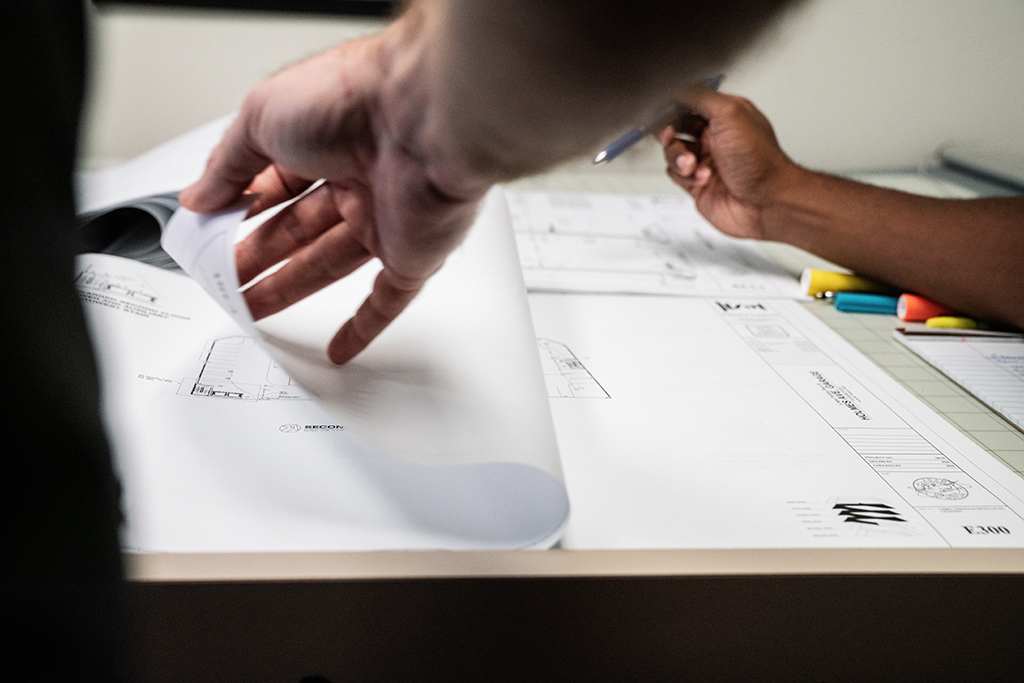
From contract types to project delivery methods, developers have a lot of choices to make before the project can get off the ground. For many — if not all —of our clients, their goal on a commercial development project is to get a quality building that will offer a high return on their investment within or under their budget. So, which contracts and delivery methods do you choose to get the best project for the lowest price? Here’s a breakdown of the pros and cons of a few of the most commonly used contract and delivery methods in our industry:
Step One
The first decision an owner needs to make is how they want the project delivered, or the Delivery Method. An owner must decide if they want to contract the design and construction separately (Design-Bid-Build or Construction Manager at Risk), if they want a true turnkey project where the contractor is responsible for both the design and construction (Design-Build), or if they want an arrangement where the owner, architect, engineer, and contractor to all share in the risk (Integrated Project Delivery). Each of these delivery methods has its own advantages and disadvantages. So, let’s take a closer look at the pros and cons of each:
Design-Bid-Build
Pros
- Creates a clear separation between the design and construction
- Most common delivery method
- Works well on simple projects
- Allows the owner the choice of inviting a single or multiple contractors to bid
Cons
- Contractor is not selected until after the design documents are complete and issued for bid, therefore contractor does not have any input in the design.
- Often, the design team instead of a contractor provides the owner with a construction budget. This can be a con because the design team may use traditional cost data instead of going to the subcontractor market as a general contractor would.
- May not work well with projects under a tight schedule
- Many times, this approach can lead to unexpected costs and/or arguments between the design team and contractor over the intent of the drawings.
Construction Manager (CM) at Risk
Pros
- Creates a clear separation between the design and construction
- Allows the Owner to select the CM/GC that will be responsible for building the project early in the process
- Creates a team environment between the CM and the Design Team – CM works with the design team to help keep the project in budget
- Can work well if project needs to be “fast-tracked”
Cons
- The Owner must rely on the CM to obtain competitive pricing for the trade work.
- The level of early CM involvement may not be necessary on simple or repetitive projects.
Design-Build
Pros
- Owner has one point of contact, the Design-Builder — typically the contractor.
- Overall project duration can be compressed since the bid process is bypassed.
- A firm, reliable price can usually be established early in the process as designer and contractor work together to develop the design with constructability and current costs in mind.
Cons
- Owner does not have the clear delineation between design and construction.
- Owner does not have the opportunity to receive multiple bids since the designer is also the builder.
- Design-build experience is a must for the chosen contractor.
Integrated Project Delivery (IPD)
Pros
- Owner selects the design team and contractor early in the process similar to the CM at Risk Delivery Method.
- “Target Value Design” is typically used to control budget.
- Well suited for complex private sector projects with a tight schedule
- Owner/Architect/Contractor are all jointly contracted and share in the risk.
- Geared for Complex projects
Cons
- The Owner may not want the shared risk with the architect and the contractor.
- Owner does not have the opportunity to receive multiple bids since the contractor is selected early in the process.
- This is a somewhat new approach that not all lenders, contractors, or owners are familiar with.
- Requires a heavy time commitment from each team member to keep communications open
Bottom Line:
There are several delivery methods that owners can choose for their projects, each with their own pros and cons. While the design-bid-build is the most common and traditional delivery method, there’s a lot of missed opportunities to add value to the schedule and budget when the documents are simply handed off. For what it’s worth, our company has had proven success with all project delivery methods but believe design-build projects and IPD especially are great approaches to develop a reliable schedule and budget that can remain consistent throughout the lifespan of the project. For more information on how these two common delivery methods stack up against each other, click here.

